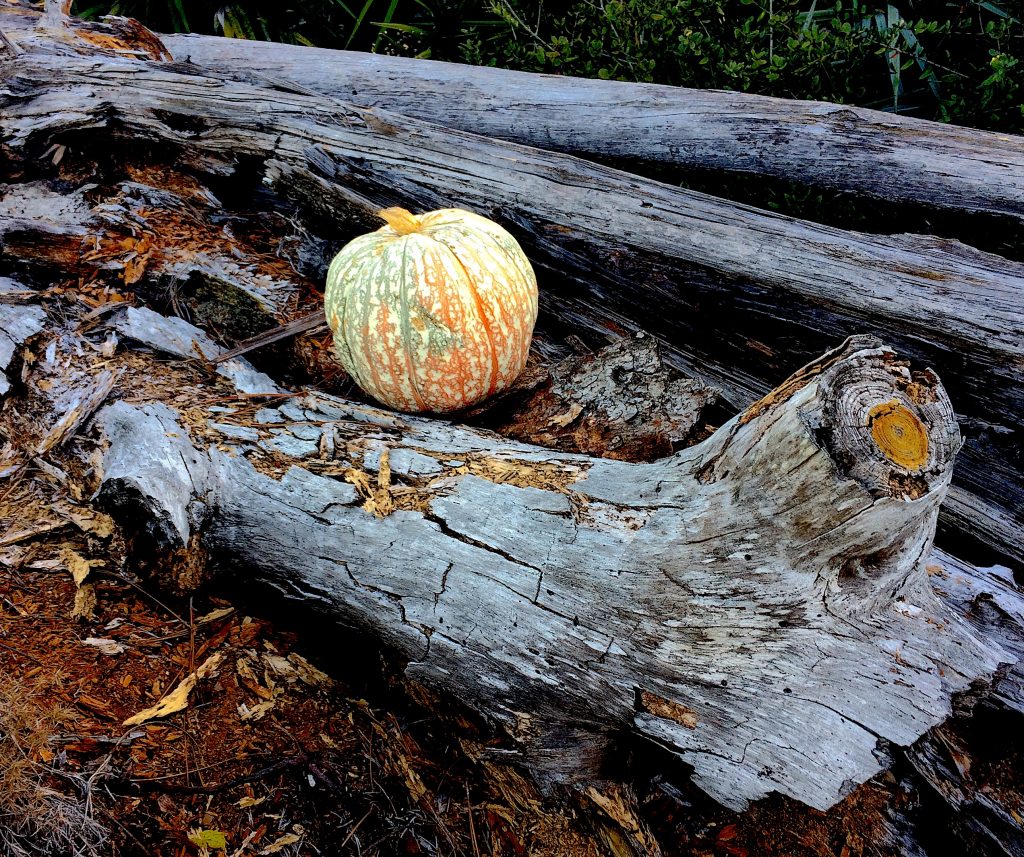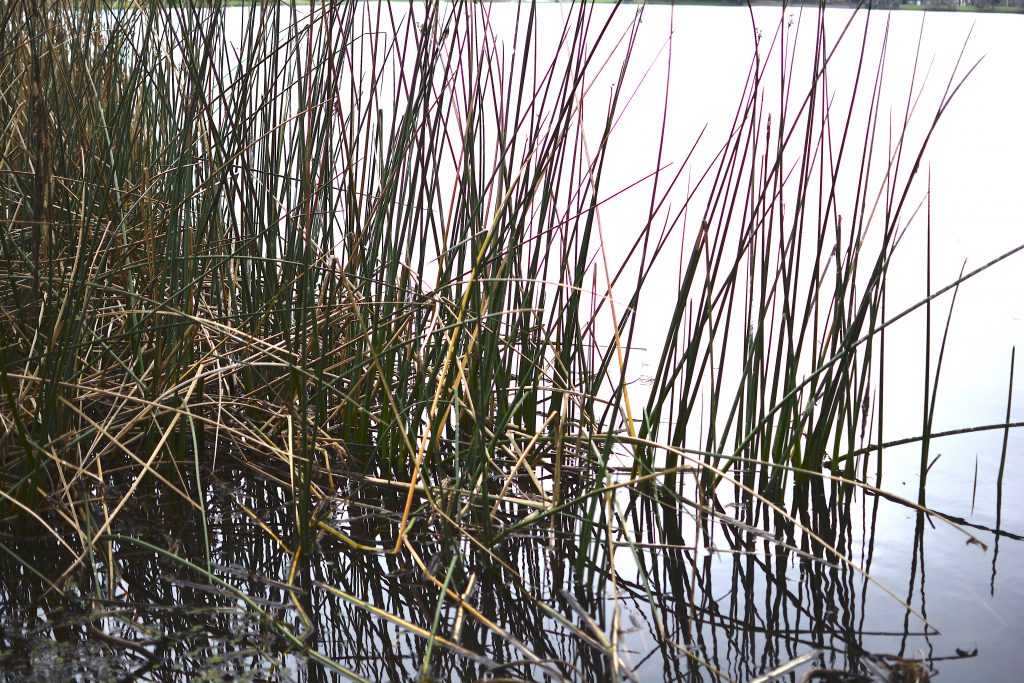
Article and photos by Green Deane
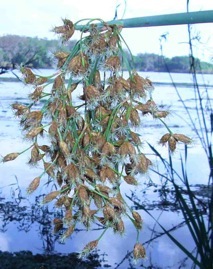
An often overlooked wild edible is Bulrush. This tall sedge gets second billing to the another common watery inhabitant, cattails. While there are several species of Bulrush locally the two we see most often are Scirpus californicus and S. validus. Used like cattails, the easiest way to tell them apart is to look at the seed tufts location and color of the seeds. This brings us to an important point: The experts tell us there are no toxic sedge seeds thus if you have a sedge you have a source of edible seeds. Part of an old saying is “Sedges Have Edges.” If you feel a sedge it has three sides. On these species the seeds are small but are easy to harvest (if you have a boat or a canoe or you like to wade.) To read more about Bulrushes and to identify sedges in general go here.
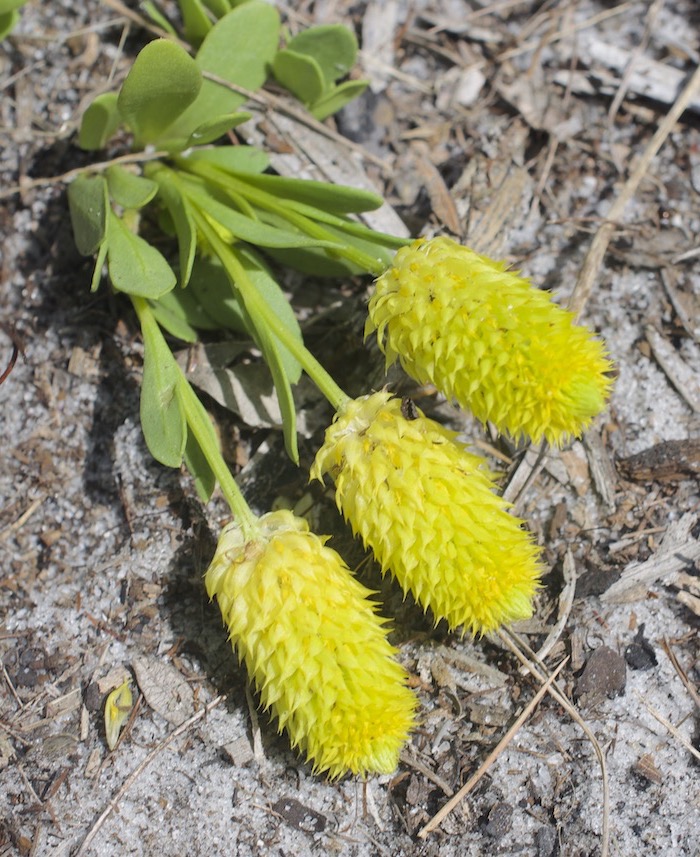
One gets used to seeing certain plants in certain places such as blueberries near oaks and pines. Dandelions also like acidic soil so they, too, can be found near oaks and pines. Lemon Bacopa (which tastes like lime) also seems to like specific places. I usually find it in the damp ruts of woods roads, or in damp spots on hiking trails, wet but sunny. Definitely not a suburban plant. I’ve actually found it in a body of water only once. Another site specific plant is Candyroot which we saw Saturday in Melbourne. It, too, is often found along wood roads or paths that can be damp, either all the time or seasonally (that can be confusing. I have found Candyroot in wet places and places that are seasonally wet but mostly high and dry.) In its tiny root it there is some methyl salicylate, smells like mint, birch, or checkerberries depending on your nose. It is a mild pain reliever. You can read about Candyroot here.
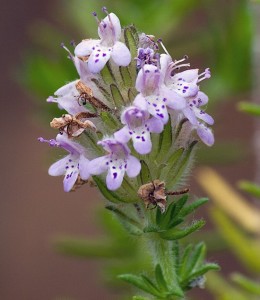
Florida pennyroyal is another scrub land denizen that is blossoming now. It used to be the third most common source of nectar for bees in the state. However it fell off the list completely in several decades ago. No one quite knows why. This past Saturday in Melbourne Florida Pennyroyal was just starting to blossom. And as pretty as they are it is only when you crush a leaf do you get an almost startling waft of pennyroyal. This little aromatic species is so select it is also a monotypic genus, meaning it has no close relatives and no one else to share the genus with. To read more about the Florida Pennyroyal go here. If you see a plant, which from a distance resembles Pennyroyal but has no aroma, that is usually Florida Rosemary.
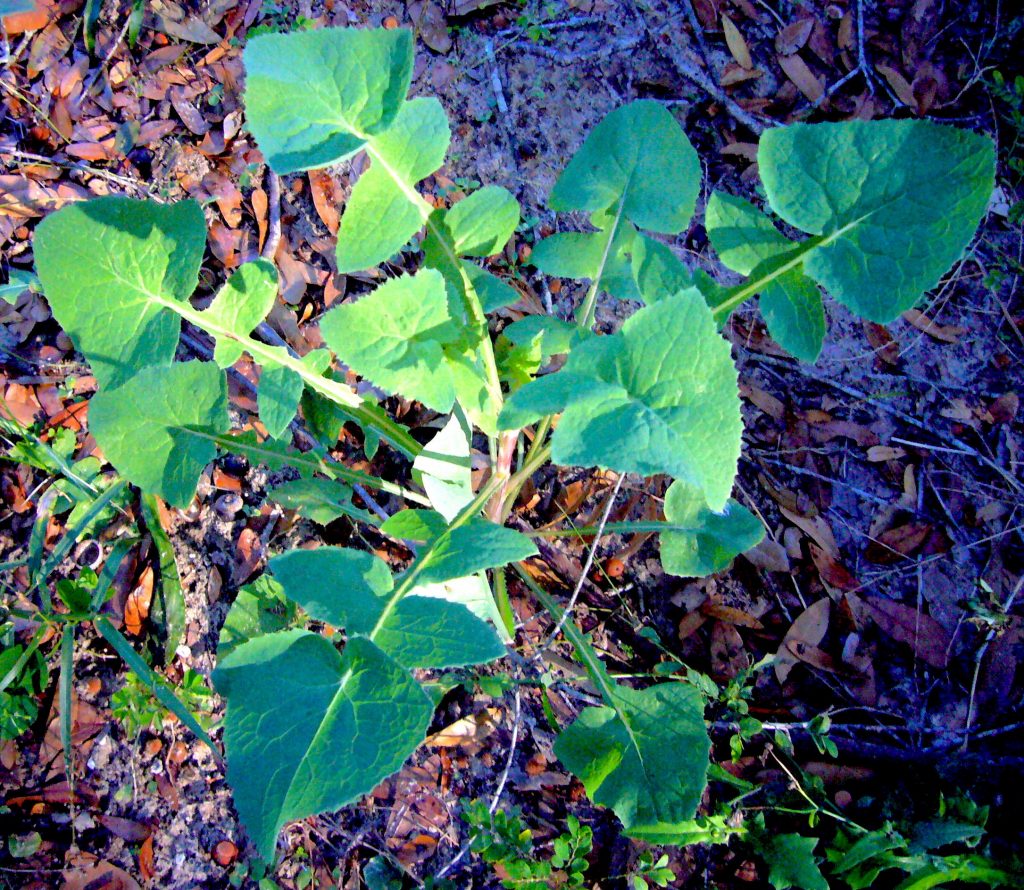
Another while edible spotted last week was Sow Thistle. A Dandelion relative it, too, prefers the cooler months locally. Not a true thistle it is one of the more milder seasonal greens with only perhaps Amaranth being more mild. Although Sow Thistles are commonly called “thistles” they are not in the genus and do not draw blood like true thistles. True thistles are well-armed with needle-sharp spines. While the Sow Thistle can look intimidating it’s mostly just for show in that most spines are soft. There are two species locally, the Common Sow Thistle and the Spiny Sow Thistle. The latter is a bit rougher than the former but no where near as abusive as true thistles. Both are slightly bitter raw. A few minutes of boiling takes away the bitterness completely (unlike wild lettuce which always stays slightly bitter.) I have a video on the sow thistles and to read more about them go here.
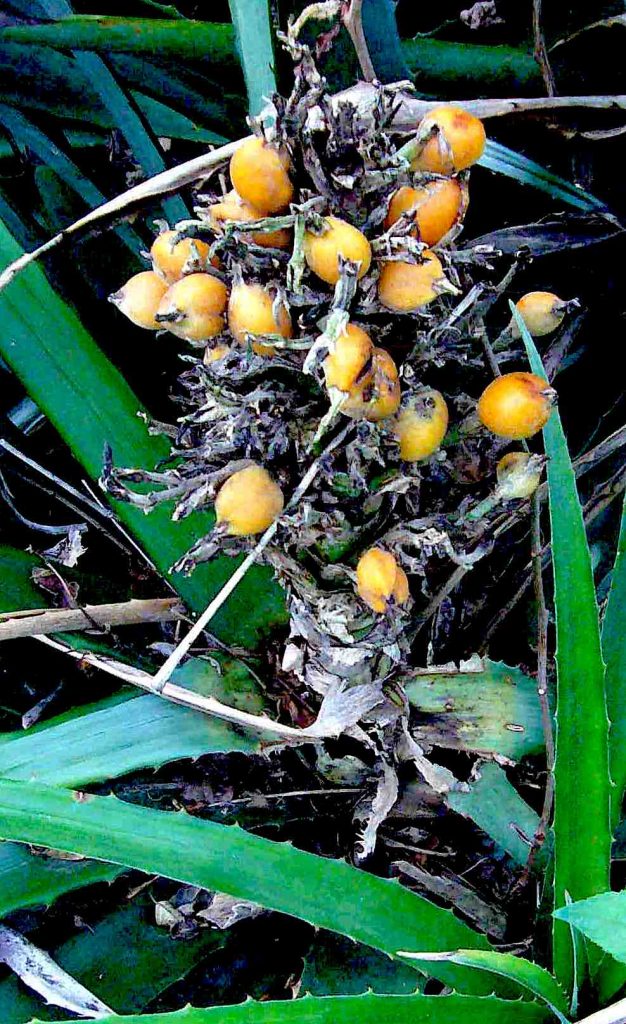
One of the odd things you can do in Florida is see plants that don’t exist. They are species the state has not collected samples of for herbarium purposes thus they don’t officially exist. One of the non-existent plants you might be seeing this time of year is Wild Pineapple, Bromelia pinguin. We saw it in West Palm Beach Sunday. I discovered it Christmas Day about a decade ago and look forward to its brilliant blossoming and yellow fruit. I have since found it in several location although it is officially not anywhere (it and the ear tree don’t officially exist.) And be forewarned: Should you find this attractive plant that does not exist it is is well-armed with spines that curve in both directions so it gets you coming and going. Also it’s edibility varies person to person so caution is advised as well. To read more about the Wild Pineapple go here.
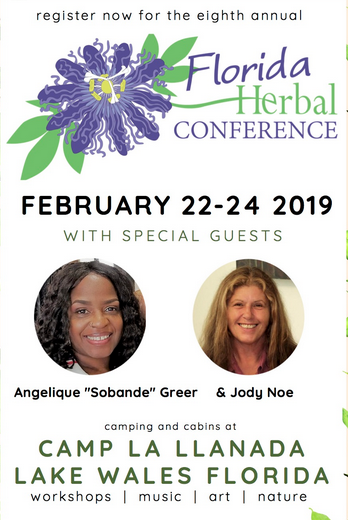
The Florida Herbal Conference is February 22-24. It’s their eighth annual event and for the eighth year I will be teaching there. You can learn quickly at conferences because you are getting a distillation of information from teachers with years of experience. Any questions can be answered quickly and to the point, no rummaging around to resolve an issue. You’re also with like-minded folks so there’s instant camaraderie. You are the majority. For more information go to: Florida Herbal Conference.
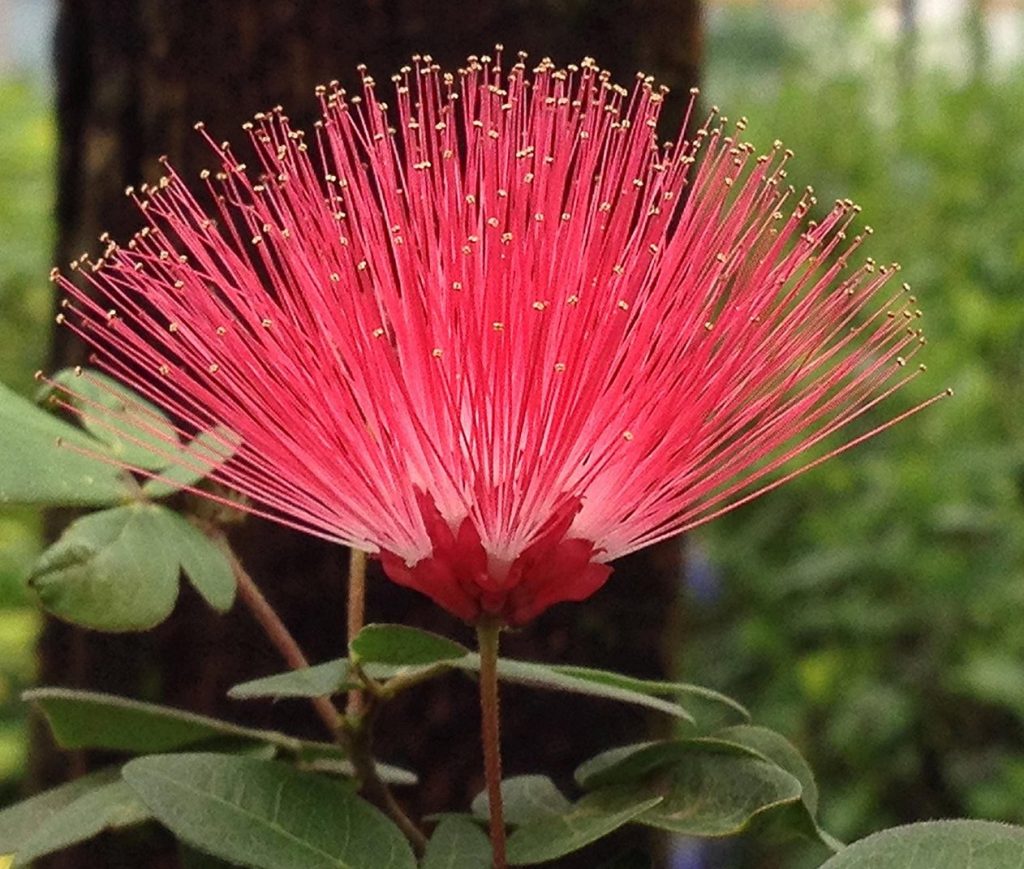
For those in my Sunday class in West Palm Beach one of the powdery puff shrub we saw is probably a Calliandra haematocephala, a native of Malaysia. It’s a small tree that was in the pea family but has been moved to the Mimosa group. I had never seen it blossom before and as far as I can tell, is not edible in any way. It’s just pretty, which has its own value. The name is slightly interesting in that it is all living Greek mangled by Dead Latin. Calliandra is a combination of Kallos (beautiful) and Andros (man) but is to mean — when poetically translated — “pretty stamen” (the male part of the flower which creates the powder puff.) Haematocephala means “blood head” or in this case “red head.” Thus pretty stamen red head. You could even stretch it to “pretty redheaded man.”
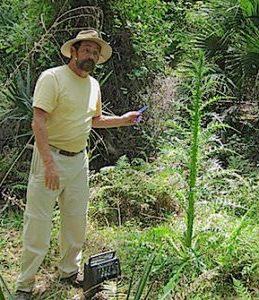
Foraging classes: flksdhlkjahflkhjf
Saturday, January 26th, Colby Alderman Park, 1099 Massachusetts Street Cassadaga, Fl. 9 a.m. to noon. Meet by the bathrooms.
Sunday, January 27th, Bayshore Live Oak Park, Bayshore Drive, Port Charlotte . 9 a.m. to noon. Meet in the parking lot across from Ganyard Street.
Saturday, February 2nd, Boulware Springs Park, 3420 SE 15th St., Gainesville, FL 32641. Meet at the picnic tables next to the pump house. 9 a.m. to noon.
Sunday, February 3rd, Blanchard Park, 10501 Jay Blanchard Trail, Orlando, FL 32817. 9 a.m. to noon. Meet near the tennis court near the YMCA building.
To learn more about the classes or to sigh up go here.
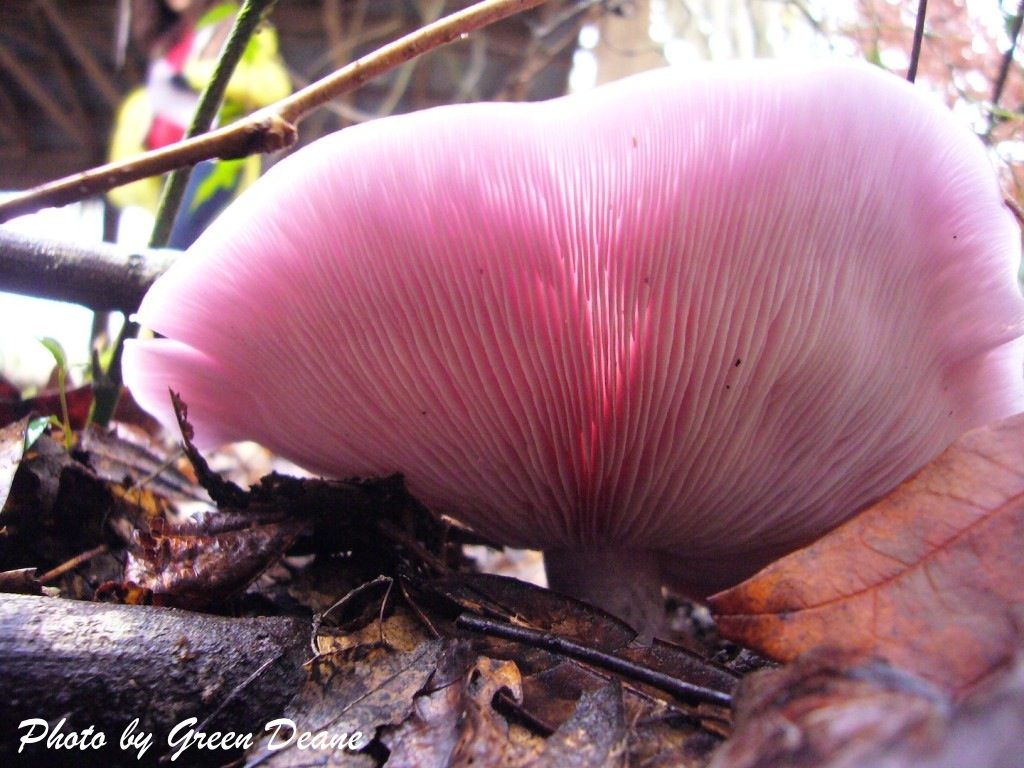
If you like mushrooms now is the time to start looking for the wintertime edible terrestrial the Blewit, or Lepista nuda. I can remember the first time I found one. It was in Gainesville. At first glance it looked like the plastic top of some discarded can under a vine but upon investigation it was a large, beautiful mushroom. I took it back to the EarthSkills gathering at the time. Several hundred folks were camping out about 20 miles south of Gainesville — I taught on site the day before — and there were several mushroom experts in attendance. That was my first mistake. I thought I was safe there. Wrong. Have you ever been mugged for a mushroom? There were many offers to take it off my hands but it went home with me. I have a class in Gainesville in early February and you can bet I will be revisiting that mushroom site again.
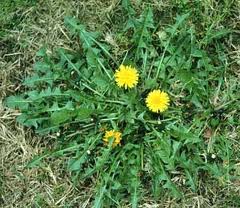
A 2018 article in the British Medical Journal calls magnesium deficiency a public health crisis that is driving many diseases ranging from heart disease to osteoporosis even diabetes. How does that happen? It’s call the nutritional triage theory. If you are low on magnesium — or any essential nutriment — the body uses what it has for essential functions such as staying alive (id est breathing, pumping blood, maintaining body temperature et cetera.) Next in line is keeping reproduction status ready. Daily repairs for long-term survival get put off. And when enough of those repairs are put off long enough that causes problems sometimes dramatically increasing disease rates (although even children are now showing the effects of low-magnesium diets.) The take away is eat your greens, better still eat wild greens. Why? Because there has been a drop in magnesium content in food crops because of soil depletion and farming techniques. The same journal reports that since 1940 there has been a tremendous decline in overall micronutrient density of food either by depletion or refining. Flour today, for example, has 82% less magnesium than it used to, polished rice -83%, sugar -99%, cheddar cheese -38%, vegetables in general -24% whole milk -21%, and bacon -18%. Interestingly one of the problem is caused by unbalanced crop fertilization. That creates high levels of nitrogen, phosphorus and potassium reduces absorption of magnesium in plants.
So while some might complain that “greens” are the majority of wild plants we forage those ‘greens” carry a micronutrient that we are becoming increasingly deficient in. I think I’ll go steam up a side dish of False Hawks Beard… or Dandelions… maybe or Sow Thistle …

This past week I did something I’ve wanted to do for several years. I recorded an opinion piece for National Public Radio Holland about a decade ago. We did it at the local PBS station in Orlando. The Dutch did a nice job with it adding music. I always thought it would make a nice video but it was audio. As I started making videos again and the technology has improved I put the audio to photos. It works well. You can listen/see it here. All my videos are available for free on You Tube. They do have ads on them so every time you watch a Green Deane video I get a quarter of one cent. Four views, one cent. Not exactly a large money-maker but it helps pays for this newsletter. If you want to see the videos without ads and some in slightly better quality you can order the DVD set. It is nine DVDs with 15 videos on each for a total of 135 videos. Many people want their own copy of the videos or they have a slow service and its easier to order then to watch them on-line. The DVDs make a good gift for that forager you know especially on long, cold winter months. Individual DVDs can also be ordered or you can pick and choose. You can order them by clicking on the button on the top right hand side of this page (if your window is open wide enough.) Or you can go here.
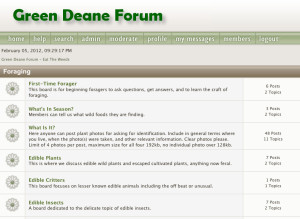
Want to identify a plant? Looking for a foraging reference? Do you have a UFO, an Unidentified Flowering Object you want identified? On the Green Deane Forum we chat about foraging all year. And it’s not just about warm-weather plants or just North American flora. Many nations around the world share common weeds so there’s a lot to talk about. There’s also more than weeds. The reference section has information for foraging around the world. There are also articles on food preservation, and forgotten skills from making bows to fermenting food. One special section is “From the Frightening Mail Bag” where we learn from people who eat first then ask questions later. You can join the forum by clicking on “forum” in the menu.

Donations to upgrade EatTheWeeds.com have gone well. Thank you to all who have contributed to either via the Go Fund Me link, the PayPal donation link or by writing to Green Deane POB 941793 Maitland FL, 32794. There are many needs left such as expanding the foraging teacher page and the page on monotypic edibles. Several functions were also lost when we transitioned to the new website. I’m still having a hard time finding articles I wrote! There’s always something and such things get more complex and expensive every year. Indeed, the average email cost to send each newsletter is $20.
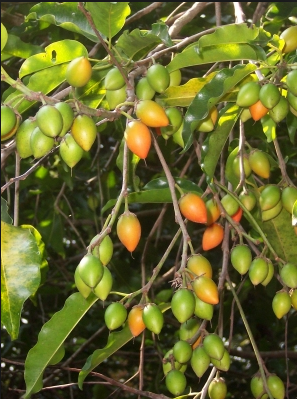
Common names can be so misleading. There are at least 18 species of “pig weed” in the United States, nearly as many “Indian Potatoes.” Last Sunday in West Palm Beach we found an almost ripe Spanish Cherry except it is not from Spain and is not a cherry. Also called Malabar Plum it is not a plum but is found in Malabar. Another common name is Bullet tree probably because of the shape of its fruit or because it’s wood is hard. Botanically it is Mimusops elengi, a native of south Asia and India.
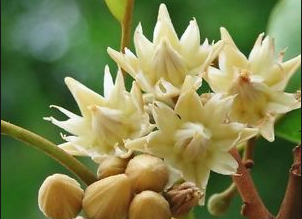
The evergreen tree is quite valuable commercially and otherwise. The wood is hard and deep red. The fruit is orange to red and edible. Various parts of the tree have also been used in Ayurvedic medicine. It’s considered a prize addition to gardens for its fruit and fragrant flowers. The tree won’t grow in temperate climates but can survive subtropical areas and is tolerant of light frosts. The fruit reminds one of a persimmon in color and astringent until ripe, the texture is flour-ish. The tree’s bark resembles an oak but the leaves favor a Magnolia look and at one time the tree was named in that genus. A relative that also grows in Florida is M. coriacea, the Monkey Apple.
If you would like to donate to Eat The Weeds please click here. Or you can use my Go Fund Me link, or by writing to Green Deane POB 941793 Maitland FL, 32794
This is weekly issue 339.
And lastly perhaps Charlie Brown visited Wickham Park this past weekend as we saw the elusive Great Pastel Pumpkin.
